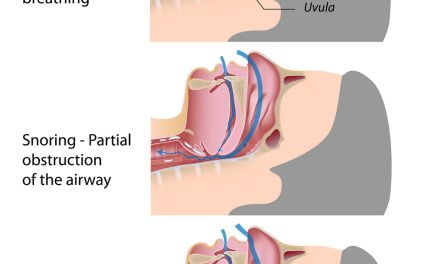How to Eat Your Way to Acid Reflux Relief
If you’ve ever felt a burning sensation in your chest or throat, you might be familiar with acid reflux. It’s uncomfortable and can seriously disrupt your day—or worse, your night. For some, this occasional annoyance becomes a chronic issue known as GERD (Gastroesophageal Reflux Disease). GERD affects millions of people, and if you’re one of them, you know it can be tough to manage. But did you know that your diet plays a crucial role in controlling your symptoms?
Let’s dive deep into the GERD diet, why it matters, and how following some simple tips can help you manage your acid reflux symptoms. And we’ll also introduce you to a game-changing product, the Sleepnitez Wedge Pillow for Acid Reflux & GERD, that can complement your diet changes to give you the relief you need.
What is a GERD Diet?
A GERD diet is a way of eating that helps reduce the symptoms of acid reflux by avoiding certain foods that trigger reflux and including those that don’t. The idea is simple: by changing what you eat, you can manage the symptoms of GERD, LPR (Laryngopharyngeal Reflux), and even silent reflux, where the symptoms are less obvious but just as uncomfortable.
Why Diet Matters in GERD Treatment
Food is fuel, but it can also be a trigger. Certain foods can relax the lower esophageal sphincter (LES)—the valve between your stomach and esophagus—allowing stomach acid to flow back up into the esophagus. This backwash is what causes the burning sensation in your chest and throat. By carefully choosing what you eat, you can keep that valve tight and stop acid from creeping up where it shouldn’t be.
7 Essential Tips for a GERD Diet
1. Avoid Trigger Foods
One of the first steps in managing GERD through diet is identifying and avoiding trigger foods. Common culprits include:
- Spicy Foods: Hot peppers, salsa, and spicy sauces can irritate your esophagus.
- Citrus Fruits: Oranges, lemons, and grapefruit are highly acidic.
- Tomato-Based Products: These include pasta sauces, ketchup, and tomato soups.
- Chocolate: Contains caffeine and theobromine, both of which can relax the LES.
- Caffeine: Found in coffee, tea, and some sodas, caffeine is a known trigger.
- Alcohol: Relaxes the LES and increases stomach acid production.
- Fatty and Fried Foods: They take longer to digest and increase pressure on the LES.
Avoiding these foods can significantly reduce GERD symptoms and make meal times more comfortable.
2. Eat Smaller, More Frequent Meals
Large meals can overwhelm your stomach and push acid up into the esophagus. By eating smaller portions throughout the day, you can reduce pressure on your LES. Aim for 5-6 small meals rather than the traditional three large ones.
3. Incorporate Alkaline and Low-Acid Foods
To balance your diet, include foods that are low in acid and have alkaline properties. These include:
- Green Vegetables: Spinach, kale, broccoli, and cucumbers.
- Root Vegetables: Potatoes, sweet potatoes, and carrots.
- Melons and Bananas: These fruits are low in acid and can soothe the stomach.
- Oatmeal: A great breakfast option that is filling and helps to absorb stomach acid.
- Ginger: Known for its anti-inflammatory properties, ginger can help reduce symptoms.
Including these foods in your diet can help balance your stomach acid and reduce reflux episodes.
4. Follow a GERD Diet Meal Plan
A structured meal plan can make sticking to a GERD-friendly diet easier. Here’s a simple 2-week acid reflux diet plan to get you started:
Week 1:
- Breakfast: Oatmeal with sliced bananas and a sprinkle of cinnamon.
- Lunch: Grilled chicken salad with mixed greens, cucumbers, and a light vinaigrette.
- Dinner: Baked salmon with steamed broccoli and quinoa.
- Snacks: Apple slices with almond butter, plain Greek yogurt with honey.
Week 2:
- Breakfast: Scrambled eggs with spinach and a slice of whole-grain toast.
- Lunch: Turkey and avocado wrap with a side of carrot sticks.
- Dinner: Stir-fried tofu with bell peppers, zucchini, and brown rice.
- Snacks: Rice cakes with hummus, a handful of unsalted almonds.
This meal plan provides a balanced approach to managing GERD by focusing on foods that are less likely to trigger symptoms.
5. Stay Upright After Eating
Gravity can be your friend when it comes to managing GERD. After eating, try to stay upright for at least two to three hours. This helps keep stomach acid where it belongs—in your stomach. Avoid lying down or going to bed right after meals. If you do need to lie down, consider elevating your head with a wedge pillow.
6. Hydrate Wisely
Water is essential, but it’s best to drink it between meals rather than with them. Drinking large amounts of liquid with meals can expand your stomach and put extra pressure on the LES. Sipping water throughout the day and avoiding carbonated beverages can help reduce reflux.
7. Consider the LPR and Silent Reflux Diet
LPR (Laryngopharyngeal Reflux) and silent reflux require similar dietary adjustments, but there are additional considerations:
- Avoid Dairy: Dairy can increase mucus production, which might aggravate symptoms.
- Cut Back on Processed Foods: These can be high in fats, sugars, and additives that trigger reflux.
- Incorporate Anti-Inflammatory Foods: Foods like turmeric, leafy greens, and berries can help soothe inflammation caused by reflux.
Following these tips can make a significant difference in managing LPR and silent reflux symptoms.
However, even with the best GERD diet, nighttime can still be a challenge. Lying flat allows stomach acid to easily flow back into your esophagus, especially when your LES is weakened. The Sleepnitez Wedge Pillow is designed to elevate your upper body while you sleep, using gravity to keep acid down and reduce the chances of reflux.
Key Benefits of Sleepnitez Wedge Pillow:
- Gradual Incline: Unlike some pillows that have a sharp incline, the Sleepnitez Wedge Pillow provides a gentle slope that supports your entire upper body, making it comfortable and effective.
- Hypoallergenic and Breathable: It’s made from premium materials that are hypoallergenic and allow air to circulate, keeping you cool and comfortable all night.
- Easy to Use: Simply place the wedge pillow on your bed and use it with your regular pillows for added comfort and support.
The combination of a GERD-friendly diet and the Sleepnitez Wedge Pillow can significantly improve your quality of life. By addressing both dietary and positional factors, you can manage your GERD symptoms more effectively.







